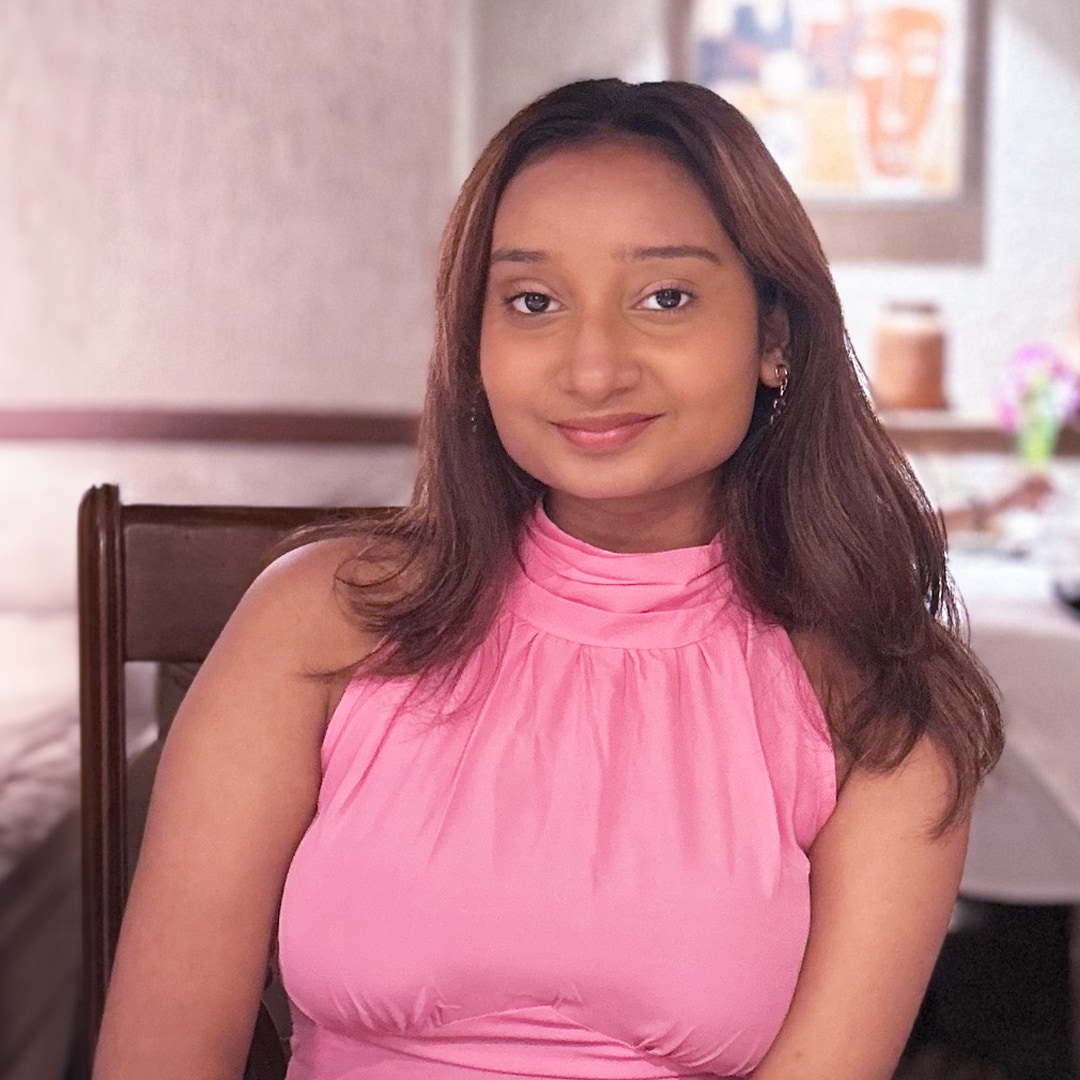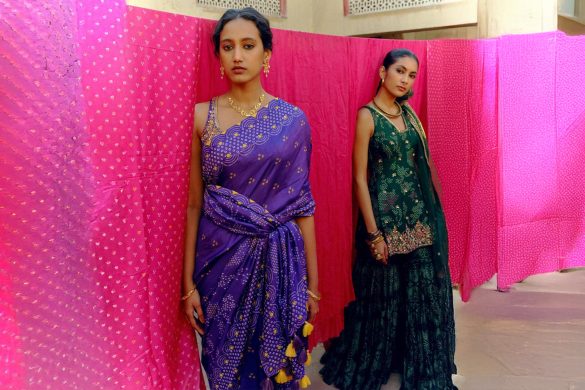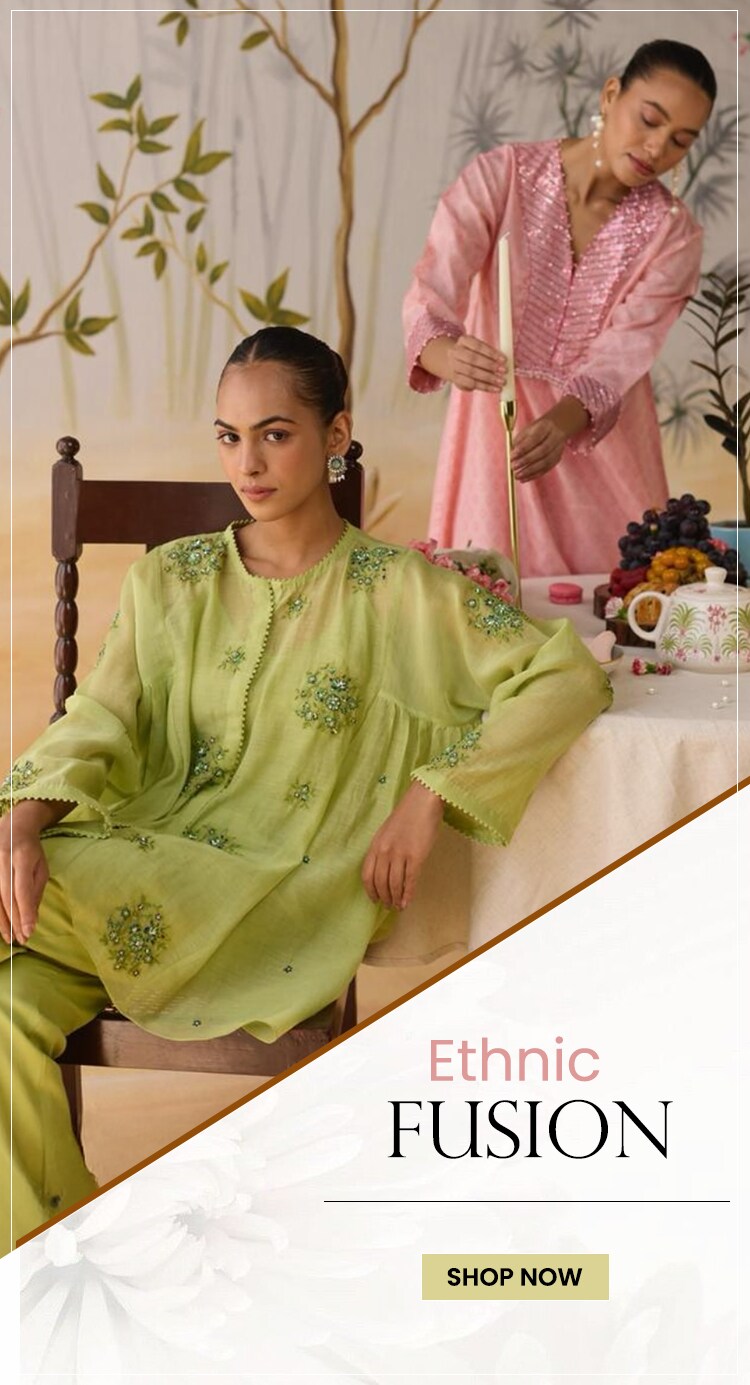Gujarati wedding is an extravagant affair. Full of colours, traditions, dance, and fun, they truly define what a big fat Indian wedding looks like. The ‘land of colours’, Gujarat, with its rich cultural heritage, celebrates its weddings with an exuberant festive spirit. If you are invited to a Gujarati wedding and have no idea which rituals and traditions await you? We bring you a detailed guide that explains every event ranging from pre-wedding festivities to post-ceremonies. So, that you enjoy every ritual with the same pomp and fervour Gujarati wedding emanates.
Gujarati Pre-Wedding Ceremonies
The list of the pre wedding Gujarati traditions that lead up to the main event.
Lagan Lakhvanu (Kankotri)

Another significant Gujarati wedding ritual, Lagan Lakhvani or Kankotri, is a ceremony in which the first official wedding invitation is offered to God to seek blessings for the couple and the upcoming wedding celebrations. The ritual is conducted a month before the main event, after which the official invitations are sent to the guests.
Chandlo Maati (Chandla Vidhi)

The first ritual of any Gujarati wedding starts with the Chandlo Matli ceremony. This ritual is all about acceptance of the new bond that will soon take place. In this, four male members from the bride’s family with the bride’s father come to the groom’s house to apply a red circle on the groom’s forehead. Also known as tikka or tilak, the red vermillion indicates that the family has accepted the groom. As a good omen, the groom is also given gifts (shagun) by the bride’s family. It is during the Chandlo Matli ceremony that the date of the marriage is fixed.
Gol Dhana
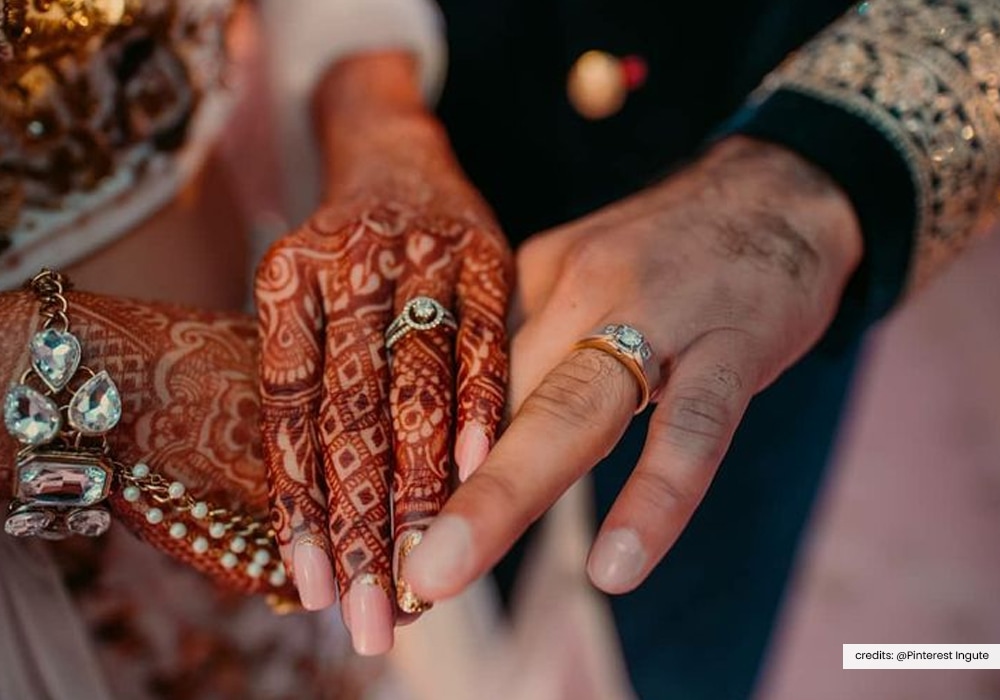
Similar to an engagement ceremony, the Gol Dhana ceremony is about distributing coriander seeds (Dhana) and gol (jaggery) to the guests. Its significance lies in the Gujarati wedding ritual of exchanging rings which marks the beginning of the upcoming celebrations. In the ceremony, the to-be-married couple takes blessings from five married women for a blossoming companionship. The tradition is followed by Ganesh Sthapana and Grah Shanti.
Usually, the bride’s family and the bride visit the groom’s place for this custom.
Mehendi

Ever heard of the Indian song “Mehendi hai rachne wali”? This song aptly explains that this henna celebration is all about dancing and singing with your family and friends. Just like other Mehendi ceremonies, Gujarati’s too celebrate it with grandeur. Hosted generally by the bride’s family (as the bride applies henna on her arms and legs) is a ritual arranged two days before the main wedding event. On this day, friends and family on both sides take part in decorating themselves with Henna.
Don’t be surprised if you find the groom’s name in the bride’s mehendi (henna) or the bride’s name in the groom’s mehendi. This is a fun Indian ritual that enunciates that they are now written in each other’s fate. But remember this ritual is not limited to the engaged couple. You too can enjoy this joyous ritual and have your partner’s name edged on your palms. All you need to do is dance and get decked up in stunning Indian wedding clothing.
You can check out our Mehendi edit curate.
Sangeet Sandhya
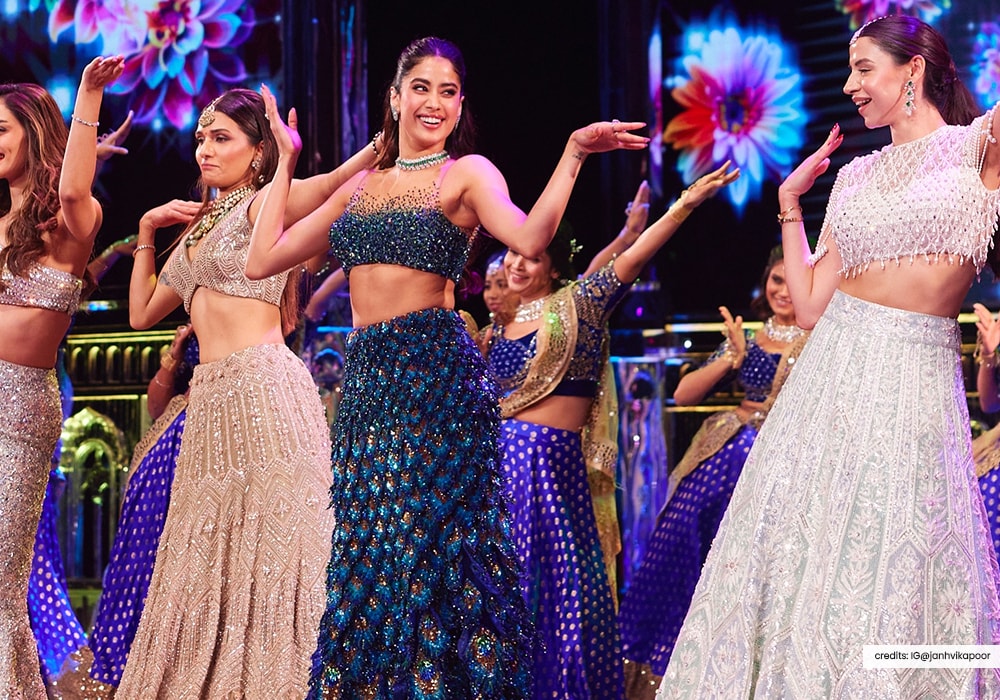
The fun doesn’t stop here. The next tradition in Gujarati pre-wedding ceremonies is the Sangeet Sandhya. Many also call it ‘Sanji’ and it is conducted a day prior or the evening before the main wedding. The motto behind this dance and music ceremony is for the families to get to know each other better. Everyone gathers on the stage to dance to energetic Bollywood songs and in a way dedicate their performances to the couple. Generally, Gujarati’s end the evening with a session of garba and dandiya.
The bride and groom often get decked up in heavy embroidery or sequin embellished lehenga and sherwanis. If you get a chance to attend one of these Gujarati wedding events, choose an ethnic clothing that screams party.
Check out our Sangeet to remember to curate.
Mangal Muharat

The purpose behind Mandap Muhurat or Mangal Muhurat is to ward off any obstacles and bad omens by offering prayers to Lord Ganesha. Families of the bride and groom along with the couple bow down and seek blessings and wish for a smooth ceremony.
Mamero
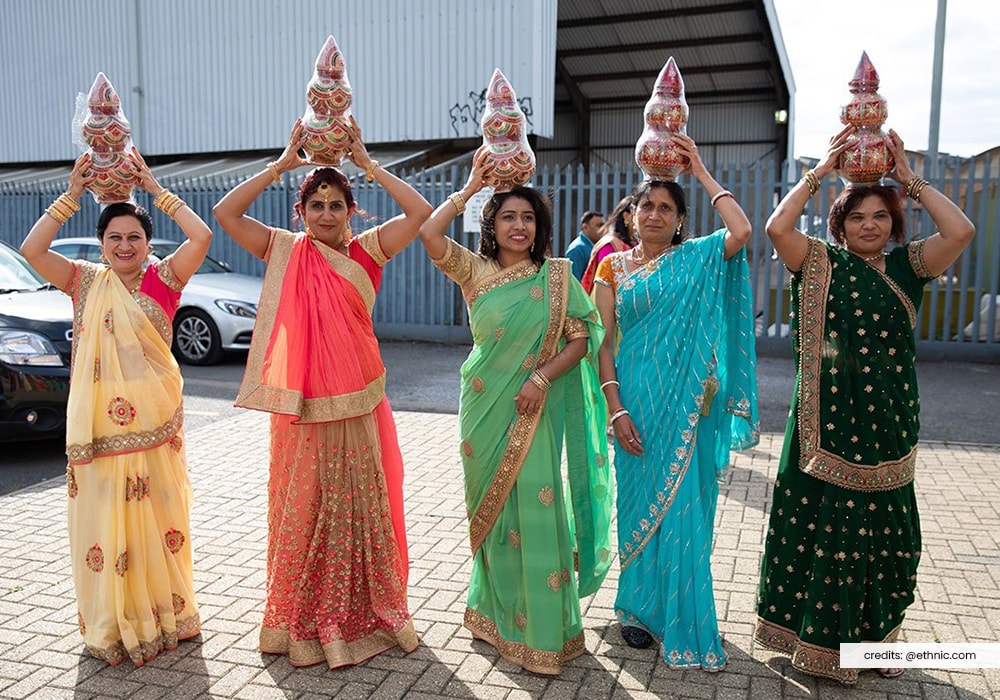
A Gujarati wedding ritual, in which the bride’s maternal uncle and maternal aunt’s husband visit the bride’s house with beautifully wrapped gifts. These gifts include traditional Panetra saree, jewellery, ivory bangles, sweets and dry fruits.
Haldi/ Pithi

The Gujarati Pithi ceremony or the Haldi event is typically performed separately in the groom’s and bride’s homes. A special paste is made from pure sandalwood, turmeric, rose water and perfume and is applied on the groom’s and bride’s body. It is done to nurture the couple’s skin and give them an unmissable glow on their wedding day. Family members and friends teasingly apply this paste on the couple’s body, making this ritual a fun and playful ceremony.
This pre-wedding ceremony is conducted a day prior to the main event. Wearing white and yellow or outfits in this shade is advised.
You can check out our lehengas for haldi.
Gujarati Wedding Rituals- The Main Event
Several rituals correspond leading to the main Gujarati wedding event.
Before diving deep into the rituals, you can check out our wedding guest edit for style inspiration.
Baarat/ Varghodo

The Varghodo or the wedding baraat involves several rituals before the groom proceeds towards the venue. The priest hands over a bowl of coins to the groom’s sister who moves it around the groom’s head to ward off evil. This is also to remind the groom that after getting married he shouldn’t forget his sister.
After this, the whole family sets out in a procession with music where they dance their way to Mandap, where the main wedding event would take place.
Ceremony of Jaan/ Ponknu

When the groom arrives at the wedding venue on a beautifully decorated mare, the bride’s mother waits for him at the entrance for a fun ritual. The ceremony of Jaan or Ponknu is a playful tradition, where the bride’s mother performs aarti and the groom touches his soon-to-be mother-in-law's feet. After which she tries to grab his nose while he tries evading the gesture with all his ability. This ritual is performed to remind the groom that a mother is giving away her precious daughter so he should be humble and grateful for it.
Antarpaat

This Antarpaat ritual is a tradition where the bride and groom see each other for the first time on their wedding mandap. A curtain or cloth (Antarpaat) is kept between the couple and when the ritual is over, the fabric is slowly brought down.
Jaimala

The next Gujarati wedding tradition is the Jaimala exchange. The bride and groom reach the mandap and exchange floral garlands. Sometimes, you can hear Indian wedding music playing in the background.
Kanyadan and Hasta Milap

The Kanyadaan ceremony is a wedding custom where the bride’s father officially gives his daughter to the groom. The ritual is marked by the gesture of the bride’s father bringing his daughter’s palm over the groom’s palm. With a promise from the groom to take care of his daughter like he has all these years.
Madhurparka

In this Gujarati wedding custom, the groom’s feet are washed by a member of the bride’s family (typically a male member). After which he is offered a drink of milk and honey.
Mangal Pheras and Saptapadi
In other Indian weddings there 7 pheras taken by the couple but in Gujarati weddings there are only four mangal pheras. While the couple is taking rounds around the sacred fire, the wedding priest chants out holy mantras.
In Saptapadi, the groom and bride walk seven times, vowing seven commitments in respect to love, respect, care, starting a family, and everlasting companionship.
Sindoor and Mangalshutra

In a Gujarati wedding, the last rituals include the groom filling the bride’s mid-parting hair with vermillion (sindoor). This symbolises the bride as a married woman. Next, the groom fastens a mangal sutra (nuptial chain) around the bride’s neck. This is another sign that the bride is now officially married.
Kansar
The main event of a Gujarati wedding ends with Kansar. Where the newly wedded couple feed each other with sweets or milk. After which they take blessings from the elders on both sides of the family.
Post Gujarati Wedding Ceremonies
The wedding traditions do not end here, to ensure that the event becomes fun for everyone, playful rituals and traditions are also performed. This is also done to set the seal on smooth beginnings for the couple.
The Ceremony of Chero Pakaryo

In this fun tradition of Chero Pakaryo, the groom grabs his mother-in-law’s saree, a gesture to request additional gifts. Her saree is then filled with gifts and cash by the bride’s family, which is then given to the groom.
The Ceremony of Joota Churai

One of the most exciting Gujarati wedding rituals is ‘Joota Churai’. In this, the sisters of the bride steal the shoes of the groom, once he enters the mandap. This is a playful event where after the wedding is over, the bridesmaids ask for money in return for the shoes.
Viddai

In Gujarati Vidaai tradition, the bride officially bids farewell to her family. The bride is offered rice, which she throws backwards as she proceeds to leave her home with the groom. The mother of the bride stands behind her daughter and catches the rice in her pallu.
This event is a tear fest so make sure to carry your handkerchief or be ready to wipe your tears with your dupatta(stole) or pallu if you are wearing a saree.
Gharni Laxmi

In Gharni Laxmi, the Gujarati bride enters her marital home for the first time. The ritual includes kicking a small pot(handi) of rice placed at the entrance of the house with the bride’s right foot.
Aeki Beki

In the tradition, a bowl of milk is placed in front of the couple. A ring is then dropped in the milk. Both the bride and groom make efforts to find the ring and whoever does it first, wins the game.
Gujarati weddings are all about fun, games, and vibrant colours filled with meaningful traditions. Whenever you are invited to one, be ready to be taken on a rollercoaster of emotions, music, dance and a family bonding you will never see anywhere else.
If you are looking for extravagant wedding guest outfits, Aza Fashions is the best place to find them. With over 1500+ designers, have access to authentic Indian ethnic trends with luxe quality that transcends boundaries.

